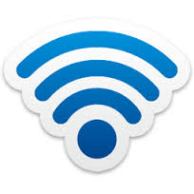การเชื่อมต่อระบบขนาดเล็ก (homework)
การเชื่อมต่อระบบขนาดเล็ก

2.1การเชื่อต่อระยะใกล้
หากมีคอมพิวเตอร์ไม่เกิน2เครื่อง ก็แค่เพิ่ม การ์ดแลน และสายสัญญาณ โดยไม่ต้องใช้ฮับและสวิชต์ ก็สามารถเชิื่อมต่อให้เป็นวงแลนได้โดยใช้สายไขว้ (cross line)
2.2การเชื่อมต่อระยะไกล
-แบบที่1 ติดตั้งเครื่องทวนสัญญาณไว้ทุกระยะ100ม.
-แบบที่2 ใช้โมเด็มหมุนโทรศัพท์เข้าหากันเมื่อต้องการเชื่อมต่อ เสร็จสิ้นธุระก็ยกเลิกการเชื่อมต่อ ความเร็วที่ได้จะได้แค่เพียงความสามารถของสายโทรศัพท์
-แบบที่3 มีประสิทธิภาพดีที่สุดในปัจจุบัน คือ เลือกใช้สายใยแก้วนำแสง จำเป็นต้องมีอุปกรณ์แปลงสัญญาณ(media converter)
-แบบที่4 การใช้ wireless lan ใช้สัญญาณวิทยุทางอากาศแทนการใช้สายโทรศัพท์ เพื่อลดปัญหาจากการใช้สายสัญญาณ เหมาะสำหรับการติดตั้งบนพื้นที่จำกัด
-แบบที่5 เทคโนโลยี G.SHDSL เป็นเทคโนโลยีมีโมเด็มที่ทำให้คู่สายทองแดงธรรมดา กลายเ็นสื่อดิจิตัลความเร็วสูง สามารถส่งข้อมูลได้ถึง 6 กม. โดยผ่านสายโทรศัพท์ธรรมดาด้วยความเร็ว 2.3 Mbps
-แบบที่6 ethernet over VDSL สามรถติดตั้งใช้งานเองได้ จึกทำให้มีต้นทุนต่ำ โดยสามารถเชื่อมต่อกับโทรศัพท์ธรรมดาได้ไกลถึง 1.5 กม. ด้วยความเร็ว 10Mbps
เครือข่ายคอมพิวเตอร์ | Computer Network
 เครือข่าย เป็นการเชื่อมต่อคอมพิวเตอร์ตั้งแต่ 2 เครื่องขึ้นไปเข้าด้วยกัน เพื่อสะดวกต่อการร่วมใช้ข้อมูล, โปรแกรม หรือเครื่องพิมพ์ และยังสามารถอำนวยความสะดวกในการติดต่อแลกเปลี่ยนข้อมูลระหว่างเครื่องได้ตลอดเวลา ระบบเครือข่ายจะถูกแบ่งออกตามขนาดของเครือข่าย ซึ่งปัจจุบันเครือข่ายที่รู้จักกันดีมีอยู่ 6 แบบ ได้แก่
เครือข่าย เป็นการเชื่อมต่อคอมพิวเตอร์ตั้งแต่ 2 เครื่องขึ้นไปเข้าด้วยกัน เพื่อสะดวกต่อการร่วมใช้ข้อมูล, โปรแกรม หรือเครื่องพิมพ์ และยังสามารถอำนวยความสะดวกในการติดต่อแลกเปลี่ยนข้อมูลระหว่างเครื่องได้ตลอดเวลา ระบบเครือข่ายจะถูกแบ่งออกตามขนาดของเครือข่าย ซึ่งปัจจุบันเครือข่ายที่รู้จักกันดีมีอยู่ 6 แบบ ได้แก่
-
เครือข่ายภายใน หรือ แลน (Local Area Network: LAN) เป็นเครือข่ายที่ใช้ในการ เชื่อมโยงกันในพื้นที่ใกล้เคียงกัน เช่นอยู่ในห้อง หรือภายในอาคารเดียวกัน
-
เครือข่ายวงกว้าง หรือ แวน (Wide Area Network: WAN) เป็นเครือข่ายที่ใช้ในการ เชื่อมโยงกัน ในระยะทางที่ห่างไกล อาจจะเป็น กิโลเมตร หรือ หลาย ๆ กิโลเมตร
-
เครือข่ายงานบริเวณนครหลวง หรือ แมน (Metropolitan area network : MAN)
-
เครือข่ายของการติดต่อระหว่างไมโครคอนโทรลเลอร์ หรือ แคน (Controller area network) : CAN) เป็นเครือข่ายที่ใช้ติดต่อกันระหว่างไมโครคอนโทรลเลอร์ (Micro Controller unit: MCU)
-
เครือข่ายส่วนบุคคล หรือ แพน (Personal area network) : PAN) เป็นเครือข่ายระหว่างอุปกรณ์เคลื่อนที่ส่วนบุคคล เช่น โน้ตบุ๊ก มือถือ อาจมีสายหรือไร้สายก็ได้
-
เครือข่ายข้อมูล หรือ แซน (Storage area network) : SAN) เป็นเครือข่าย (หรือเครือข่ายย่อย) ความเร็วสูงวัตถุประสงค์เฉพาะที่เชื่อมต่อภายในกับอุปกรณ์จัดเก็บข้อมูลชนิดต่างกันด้วยแม่ข่ายข้อมูลสัมพันธ์กันบนคัวแทนเครือข่ายขนาดใหญ่ของผู้ใช้
เซิร์ฟเวอร์ (Server) หรือเรียกอีกอย่างหนึ่งว่า เครื่องแม่ข่าย เป็นเครื่องคอมพิวเตอร์หลักในเครือข่าย ที่ทำหน้าที่จัดเก็บและให้บริการไฟล์ข้อมูลและทรัพยากรอื่นๆ กับคอมพิวเตอร์เครื่องอื่น ๆ ใน เครือข่าย โดยปกติคอมพิวเตอร์ที่นำมาใช้เป็นเซิร์ฟเวอร์มักจะเป็นเครื่องที่มีสมรรถนะสูง และมีฮาร์ดดิสก์ความจำสูงกว่าคอมพิวเตอร์เครื่องอื่น ๆ ในเครือข่าย
-
ไคลเอนต์ (Client) หรือเรียกอีกอย่างหนึ่งว่า เครื่องลูกข่าย เป็นคอมพิวเตอร์ในเครือข่ายที่ร้องขอ บริการและเข้าถึงไฟล์ข้อมูลที่จัดเก็บในเซิร์ฟเวอร์ หรือพูดง่าย ๆ ก็คือ ไคลเอนต์ เป็นคอมพิวเตอร์ ของผู้ใช้แต่ละคนในระบบเครือข่าย
-
ฮับ (HUB) หรือ เรียก รีพีตเตอร์ (Repeater) คืออุปกรณ์ที่ใช้เชื่อมต่อกลุ่มคอมพิวเตอร์ ฮับ มีหน้าที่รับส่งเฟรมข้อมูลทุกเฟรมที่ได้รับจากพอร์ตใดพอร์ตหนึ่ง ไปยังพอร์ตที่เหลือ คอมพิวเตอร์ที่เชื่อมต่อเข้ากับฮับจะแชร์แบนด์วิธหรืออัตราข้อมูลของเครือข่าย เพราะฉะนั้นถ้ามีคอมพิวเตอร์เชื่อมต่อมากจะทำให้อัตราการส่งข้อมูลลดลง
-
สวิตช์ (Switch) คืออุปกรณ์เครือข่ายที่ทำหน้าที่ในเลเยอร์ที่ 2 และทำหน้าที่ส่งข้อมูลที่ได้รับมาจากพอร์ตหนึ่งไปยังพอร์ตเฉพาะที่เป็นปลายทางเท่านั้น และทำให้คอมพิวเตอร์ที่เชื่อมต่อกับพอร์ตที่เหลือส่งข้อมูลถึงกันในเวลาเดียวกัน ดังนั้น อัตราการรับส่งข้อมูลหรือแบนด์วิธจึงไม่ขึ้นอยู่กับคอมพิวเตอร์ ปัจจุบันนิยมเชื่อมต่อแบบนี้มากกว่าฮับเพราะลดปัญหาการชนกันของข้อมูล
-
เราเตอร์ (Router)เป็นอุปรณ์ที่ทำหน้าที่ในเลเยอร์ที่ 3 เราท์เตอร์จะอ่านที่อยู่ (Address) ของสถานีปลายทางที่ส่วนหัว (Header) ข้อแพ็กเก็ตข้อมูล เพื่อที่จะกำหนดและส่งแพ็กเก็ตต่อไป เราท์เตอร์จะมีตัวจัดเส้นทางในแพ็กเก็ต เรียกว่า เราติ้งเทเบิ้ล (Routing Table) หรือตารางจัดเส้นทางนอกจากนี้ยังส่งข้อมูลไปยังเครือข่ายที่ให้โพรโทคอลต่างกันได้ เช่น IP (Internet Protocol) , IPX (Internet Package Exchange) และ AppleTalk นอกจากนี้ยังเชื่อมต่อกับเครือข่ายอื่นได้ เช่น เครือข่ายอินเทอร์เน็ต
-
บริดจ์ (Bridge) เป็นอุปกรณ์ที่มักจะใช้ในการเชื่อมต่อวงแลน (LAN Segments) เข้าด้วยกัน ทำให้สามารถขยายขอบเขตของ LAN ออกไปได้เรื่อยๆ โดยที่ประสิทธิภาพรวมของระบบ ไม่ลดลงมากนัก เนื่องจากการติดต่อของเครื่องที่อยู่ในเซกเมนต์เดียวกันจะไม่ถูกส่งผ่าน ไปรบกวนการจราจรของเซกเมนต์อื่น และเนื่องจากบริดจ์เป็นอุปกรณ์ที่ทำงานอยู่ในระดับ Data Link Layer จึงทำให้สามารถใช้ในการเชื่อมต่อเครือข่ายที่แตกต่างกันในระดับ Physical และ Data Link ได้ เช่น ระหว่าง Eternet กับ Token Ring เป็นต้น
บริดจ์ มักจะถูกใช้ในการเชื่อมเครือข่ายย่อย ๆ ในองค์กรเข้าด้วยกันเป็นเครือข่ายใหญ่ เพียงเครือข่ายเดียว เพื่อให้เครือข่ายย่อยๆ เหล่านั้นสามารถติดต่อกับเครือข่ายย่อยอื่นๆ ได้
เกตเวย์ (Gateway) เป็นอุปกรณ์ฮาร์ดแวร์ที่เชื่อมต่อเครือข่ายต่างประเภทเข้าด้วยกัน เช่น การใช้เกตเวย์ในการเชื่อมต่อเครือข่าย ที่เป็นคอมพิวเตอร์ประเภทพีซี (PC) เข้ากับคอมพิวเตอร์ประเภทแมคอินทอช (MAC) เป็นต้น
Scale
A network can be characterized by its physical capacity or its organizational purpose. Use of the network, including user authorization and access rights, differ accordingly.
Personal area network[edit]
A personal area network (PAN) is a computer network used for communication among computer and different information technological devices close to one person. Some examples of devices that are used in a PAN are personal computers, printers, fax machines, telephones, PDAs, scanners, and even video game consoles. A PAN may include wired and wireless devices. The reach of a PAN typically extends to 10 meters.[10] A wired PAN is usually constructed with USB and Firewire connections while technologies such as Bluetooth and infrared communication typically form a wireless PAN.
Local area network[edit]
A local area network (LAN) is a network that connects computers and devices in a limited geographical area such as a home, school, office building, or closely positioned group of buildings. Each computer or device on the network is a node. Wired LANs are most likely based on Ethernet technology. Newer standards such as ITU-T G.hn also provide a way to create a wired LAN using existing wiring, such as coaxial cables, telephone lines, and power lines.[11]
A LAN is depicted in the accompanying diagram. All interconnected devices use the network layer (layer 3) to handle multiple subnets (represented by different colors). Those inside the library have 10/100 Mbit/s Ethernet connections to the user device and a Gigabit Ethernet connection to the central router. They could be called Layer 3 switches, because they only have Ethernet interfaces and support the Internet Protocol. It might be more correct to call them access routers, where the router at the top is a distribution router that connects to the Internet and to the academic networks’ customer access routers.
The defining characteristics of a LAN, in contrast to a wide area network (WAN), include higher data transfer rates, limited geographic range, and lack of reliance onleased lines to provide connectivity. Current Ethernet or other IEEE 802.3 LAN technologies operate at data transfer rates up to 10 Gbit/s. The IEEE investigates the standardization of 40 and 100 Gbit/s rates.[12] A LAN can be connected to a WAN using a router.
Home area network[edit]
A home area network (HAN) is a residential LAN which is used for communication between digital devices typically deployed in the home, usually a small number of personal computers and accessories, such as printers and mobile computing devices. An important function is the sharing of Internet access, often a broadband service through a cable TV or digital subscriber line (DSL) provider.
Storage area network[edit]
A storage area network (SAN) is a dedicated network that provides access to consolidated, block level data storage. SANs are primarily used to make storage devices, such as disk arrays, tape libraries, and optical jukeboxes, accessible to servers so that the devices appear like locally attached devices to the operating system. A SAN typically has its own network of storage devices that are generally not accessible through the local area network by other devices. The cost and complexity of SANs dropped in the early 2000s to levels allowing wider adoption across both enterprise and small to medium sized business environments.
Campus area network[edit]
A campus area network (CAN) is made up of an interconnection of LANs within a limited geographical area. The networking equipment (switches, routers) and transmission media (optical fiber, copper plant,Cat5 cabling, etc.) are almost entirely owned by the campus tenant / owner (an enterprise, university, government, etc.).
For example, a university campus network is likely to link a variety of campus buildings to connect academic colleges or departments, the library, and student residence halls.
Backbone network[edit]
A backbone network is part of a computer network infrastructure that provides a path for the exchange of information between different LANs or subnetworks. A backbone can tie together diverse networks within the same building, across different buildings, or over a wide area.
For example, a large company might implement a backbone network to connect departments that are located around the world. The equipment that ties together the departmental networks constitutes the network backbone. When designing a network backbone, network performance and network congestion are critical factors to take into account. Normally, the backbone network’s capacity is greater than that of the individual networks connected to it.
Another example of a backbone network is the Internet backbone, which is the set of wide area networks (WANs) and core routers that tie together all networks connected to the Internet.
Metropolitan area network[edit]
A Metropolitan area network (MAN) is a large computer network that usually spans a city or a large campus.
Wide area network[edit]
A wide area network (WAN) is a computer network that covers a large geographic area such as a city, country, or spans even intercontinental distances. A WAN uses a communications channel that combines many types of media such as telephone lines, cables, and air waves. A WAN often makes use of transmission facilities provided by common carriers, such as telephone companies. WAN technologies generally function at the lower three layers of the OSI reference model: the physical layer, the data link layer, and the network layer.
Enterprise private network[edit]
An enterprise private network is a network built by a single organization to interconnect its office locations (e.g., production sites, head offices, remote offices, shops) in order to share computer resources.
Virtual private network[edit]
A virtual private network (VPN) is a computer network in which some of the links between nodes are carried by open connections or virtual circuits in some larger network (e.g., the Internet) instead of by physical wires. The data link layer protocols of the virtual network are said to be tunneled through the larger network when this is the case. One common application is secure communications through the public Internet, but a VPN need not have explicit security features, such as authentication or content encryption. VPNs, for example, can be used to separate the traffic of different user communities over an underlying network with strong security features.
VPN may have best-effort performance, or may have a defined service level agreement (SLA) between the VPN customer and the VPN service provider. Generally, a VPN has a topology more complex than point-to-point.
Basic hardware components[edit]
Main article: Networking hardware
Apart from the physical communications media described above, networks comprise additional basic hardware building blocks, such as network interface controller cards (NICs), repeaters, hubs, bridges,switches, routers, and firewalls.
Network interfaces[edit]
A network interface controller (NIC) is a hardware accessory that provides a computer with both a physical interface for accepting a network cable connector and the ability to process low-level network information.
In Ethernet networks, each network interface controller has a unique Media Access Control (MAC) address which is usually stored in the card’s permanent memory. MAC address uniqueness is maintained and administered by the Institute of Electrical and Electronics Engineers (IEEE) in order to avoid address conflicts between devices on a network. The size of an Ethernet MAC address is six octets. The 3 most significant octets are reserved to identify card manufacturers. The card manufacturers, using only their assigned prefixes, uniquely assign the 3 least-significant octets of every Ethernet card they produce.
Repeaters and hubs[edit]
A repeater is an electronic device that receives a network signal, cleans it of unnecessary noise, and regenerates it. The signal is retransmitted at a higher power level, or to the other side of an obstruction, so that the signal can cover longer distances without degradation. In most twisted pair Ethernet configurations, repeaters are required for cable that runs longer than 100 meters. A repeater with multiple ports is known as a hub. Repeaters work on the physical layer of the OSI model. Repeaters require a small amount of time to regenerate the signal. This can cause a propagation delay which can affect network performance. As a result, many network architectures limit the number of repeaters that can be used in a row, e.g., the Ethernet 5-4-3 rule.
Repeaters and hubs have been mostly obsoleted by modern switches.
Bridges[edit]
A network bridge connects multiple network segments at the data link layer (layer 2) of the OSI model to form a single network. Bridges broadcast to all ports except the port on which the broadcast was received. However, bridges do not promiscuously copy traffic to all ports, as hubs do. Instead, bridges learn which MAC addresses are reachable through specific ports. Once the bridge associates a port with an address, it will send traffic for that address to that port only.
Bridges learn the association of ports and addresses by examining the source address of frames that it sees on various ports. Once a frame arrives through a port, the bridge assumes that the MAC address is associated with that port and stores its source address. The first time a bridge sees a previously unknown destination address, the bridge will forward the frame to all ports other than the one on which the frame arrived.
Bridges come in three basic types:
-
Local bridges: Directly connect LANs
-
Remote bridges: Can be used to create a wide area network (WAN) link between LANs. Remote bridges, where the connecting link is slower than the end networks, largely have been replaced with routers.
-
Wireless bridges: Can be used to join LANs or connect remote devices to LANs.
Switches[edit]
A network switch is a device that forwards and filters OSI layer 2 datagrams between ports based on the MAC addresses in the packets.[15] A switch is distinct from a hub in that it only forwards the frames to the ports involved in the communication rather than all ports connected. A switch breaks the collision domain but represents itself as a broadcast domain. Switches make decisions about where to forward frames based on MAC addresses. A switch normally has numerous ports, facilitating a star topology for devices, and cascading additional switches. Multi-layer switches are capable of routing based on layer 3 addressing or additional logical levels. The term switch is often used loosely to include devices such as routers and bridges, as well as devices that may distribute traffic based on load or based on application content (e.g., a Web URL identifier).
Routers[edit]
A router is an internetworking device that forwards packets between networks by processing the routing information included in the packet or datagram (Internet protocol information from layer 3). The routing information is often processed in conjunction with the routing table (or forwarding table). A router uses its routing table to determine where to forward packets. (A destination in a routing table can include a “null” interface, also known as the “black hole” interface because data can go into it, however, no further processing is done for said data.)
Firewalls[edit]
A firewall is a network device for controlling network security and access rules. Firewalls are typically configured to reject access requests from unrecognized sources while allowing actions from recognized ones. The vital role firewalls play in network security grows in parallel with the constant increase in cyber attacks.
SF Cinema Grand Opening@Promenada
LSDT
I mentioned in my last post about being welcomed into the LSDT – Lincoln Société de Design Typographique. What is the LSDT? Philippa and Barrie began the LSDT for students that weren’t awarded ISTD but in their opinion deserved recognition. When submitting to ISTD you need quite thick skin as they are quite harsh with their feedback and particular about who they pass, but sometimes they get it wrong. Lincoln Alumni Dan Collier’s Typographic Links was failed by the ISTD in 2007 but was displayed in the MoMA in New York in 2011 – I’d say that’s 1-0 to Dan!
I was really surprised when Barrie said my name – I’m still not really convinced that I deserve it, but am very honoured! This year the LSDT members voted on who they thought should join, so thanks to everyone who voted for me – obviously you all liked my swear words…
View original post 356 more words
We went to see Jinny off at the airport.
School day while we practice for the show
DIY Citrus Leg Scrub













